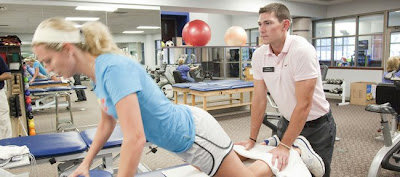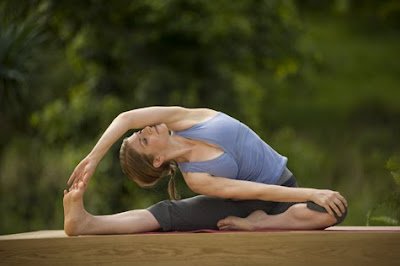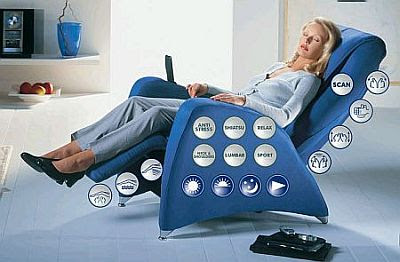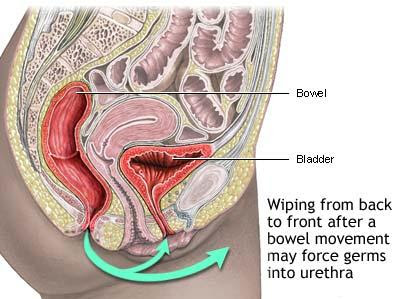Sedation and Phobia Dentist providing dental treatment in Brighton and near Cordon, UK
I was at a Children's Party this Summer for a fellow classmate of my 4 year old son. I was talking to one of the mums there about her little boy Charlie and his recent experiences with the Dentist. I had mentioned to her that I was a Phobia Dentist, treating people who were really nervous of going to the dentist so she explained all.
Charlie had a cavity. His mum knew about it already, she had spotted a black mark on one of his baby teeth. Charlie was complaining about this tooth every time he ate so it was obviously startin g to cause him pain. Charlie hadn't been to the dentist yet, she dint feel he was old enough to understand and probably wouldn't have kept still in the chair.
g to cause him pain. Charlie hadn't been to the dentist yet, she dint feel he was old enough to understand and probably wouldn't have kept still in the chair.
Mum was already absolutely mortified, was she being a really bad mother? Had she been feeding her child lots of sweets? Was Charlie not brushing enough? Her child was in pain and she believed it was her fault, how could she have let this go unnoticed? Was it her fault her child was suffering? The guilt was already building up and really would not be helped by what happened next.
So, she went to a local dentist. It really didn't go well. Firstly, the Dentist AND the Dental Assistant made the mum feel so small, so patronised for allowing Charlie to have sweets and fizzy drinks, not brushing enough and not having been to a dentist earlier to prevent the cavity from appearing in the first place. Mum knew all this already, was already feeling guilty, so that guilt was absolutely confirmed by the Dentist. Mum at this point is wondering where the  exit is.
exit is.
The Dentists starts to have a go at Charlie, telling him he's having too many sweets and not brushing enough. Charlie is getting worried, he's being told off by two strangers who have masks and gloves on, with a bright light shining in his face. If you've seen horror films before, isn't this sounding familiar?
Then the dentist proceeds to try to fix the problem with his drill. High pitched noises of the drill, lots of water spray, high powered suction to get rid of the water, Charlie really isn't happy, he starts crying. The Dentist isn't having it, is losing his patience, "don't be silly, lie still, it wont hurt".
Mum plucks up courage and says to the dentist "tell you what, we will leave it there, I'll go somewhere else" and walks out.
The challenge now is to persuade Charlie that going to the Dentist can be nice and fun, not scary, it can be comfy and gentle, no one has to tell you off. The challenge now is to get the filling that needs doing done without making worse the dental phobia that is starting to build in Charlies head. The challenge now is to carry on dental treatment without needing Dental Sedation.
The dentist had been trying a very old fashioned Health care approach. In that one visit, he was trying to fix the problem with the tooth, prevent the problem coming back by "not so gentle" rebuking, thinking that that will improve the child's health. Sure if it works, that will improve health in the very short term, but Charlie wont be going back to a dentist in a hurry and if he does develop further problems with his teeth its going to be a lot harder to treat. So, long term health care is being jeopardised by trying to improve Charlie's health in just the one visit. You still hear of stories of Dentists restraining "difficult children", although as a practice it is thankfully dying out.
to treat. So, long term health care is being jeopardised by trying to improve Charlie's health in just the one visit. You still hear of stories of Dentists restraining "difficult children", although as a practice it is thankfully dying out.
So, how do we prevent our Children getting to this situation in the first place? Fortunately it is not too complicated.
The little known Truths about Kids Cavities
Cavities in baby teeth are very common, especially in areas where there is no Fluoride in the water. So if you think that you are the only mum or dad to have a child with a cavity, think again! Cavities in baby back teeth often start without any signs at all and are difficult to spot in the early stages, even for a dentist. Often the first sign there is of a problem is an black or grey mark in top of the tooth, and probably a obvious dent where the top of the enamel has broken down. Cavities are surprising easy to start. You don't need lots of sugar, lots of sweets or fizzy drinks, we often see children who have lots of sweets (freely admitted by parents) with no sign of cavities. The question is WHEN rather than HOW MUCH.
Teeth are under acid attack from plaque bacteria all day, even with the best brushing in the world. The reason why cavities aren't forming all the time is that the enamel has the ability to repair itself, often called "re-mineralisation". Let's have a look what happens to the tooth from a single hit of sugar:
1. Sugar hits the teeth from mos t meals, sweets, cakes, drinks etc.
t meals, sweets, cakes, drinks etc.
2. The bacteria on the teeth turn the sugar into acid
3. The acid starts to weaken the enamel
4. The sugar gets washed away over the next few hours by the saliva
5. As the sugar levels in the mouth drop, the bacteria run out of their food and stop producing acid
6. The minerals in the Saliva deposit back into the DE-unrealised areas and re-hardens them.
7. The tooth returns to normal.
Any sugar, whether it is hidden in foods or milk, or pretty well "neat" has the ability to cause a cavity. The problem comes when the teeth don't get a chance to rest between attacks and remunerates. Have a look at those points again but this time, insert more sugar in that two hour period of rest. When the sugar gets reintroduced in that few hours, you go back up to the top of the cycle again. More and more DE-mineralisation occurs and soon a cavity forms.
So it really isn't whether you have five biscuits or one in between meals, if you don't give the teeth a rest, a cavity will develop.
So, the best plan is to keep sugar to around mealtimes, avoiding the cheeky biscuit in between meals and make sure that no sugar hits the teeth at least on hour before bedtime.
The challenge of brushing Kids teeth!
As we said earlier, even the best brushing in the world cant rid your whole mouth of plaque bacteria, little children cant floss particularly well, kids brushing is often sporadic (it can be in my house) so you do the best you can! As dentists, we believe that one of the main reasons for brushing, apart from reducing the amount of bacteria about, is to get Fluoride onto the teeth. Fluoride is well proven to strengthen teeth in lots of ways, as they develop in the jaw but also as they re-minerals, repairing teeth with stronger reinforced enamel, more  resistant to acid attack.
resistant to acid attack.
Twice a day with a suitable level of Fluoride is normally recommended but if your child is at risk of cavities, it may be sensible for your dentist to supplement the fluoride intake with drops or chewable tablets. I would advise against the use of Non-Mint toothpaste because it is a nightmare to get kids off the fruity ones onto quite strong tasting adult mint toothpaste. Kids toothpastes come in mild mint flavours which are quite pleasant. Kids toothpastes don't contain too much fluoride so it is alright for kids to suck on their brush after they've cleaned.
The one other piece of advice is to avoid brushing immediately after high acid foods and drinks, like citrus juices and fizzy drinks. The loose enamel gets brushed away and thins the teeth. Leave it at least an hour.
Sounds obvious, but a Healthy diet is very useful
A good healthy diet is essential, including roughage. High fibre foods are very good at reducing plaque build up as they knock bits of plaque off the teeth, more liquid of soft diets allow food to push and get stuck in between the teeth. The is a whole article that could be written about Healthy diet for good teeth, there just isn't space here. Just make sure it is balanced and everything in moderation!
Regular Positive Dental Visits
Find a good dentist who is understanding, fun and patient with children. Get them in early, say around the age of two, bring them with you for your checkup, just to see you in the chair, don't hurry them to get in the chair and have a checkup, if your child is showing signs of reluctance to sit in the chair, don't force the situation, keep it light and leave it for a month or so. Any pressure early on from parent or dentist, not allowing the child to get naturally settled with the idea of showing their teeth to a stranger, can affect their confidence and slow down the amount of time it takes them to trust the "stranger" dentist.
Find a dentist who likes Preventative Dentistry, we have some great technology available to us now like the Discontent Laser Cavity detector, which can find cavities before x-rays, without you feeling anything.
Read some stories with your child about "Going to the Dentist" a few days before their visit. There are lots of fun books out there that are great at reducing the initial scepticism that the child may have. One tip though, read the book yourself first in the bookshop before buying, don't read them any book that introduces the words "pain", "fear", "hurt". Believe me, I've found books like that. If you start associating a trip to the dentist with these words even slightly related, the child will wonder why. Avoid these words at home, phrases like "it wont hurt" have the opposite intention on a child! Keep all your talk positive, explain what the dentist will probably be doing, the ride in the chair, the dental mirror, opening your mouth wide "like a lion roaring", counting your teeth and the bribery of the sticker. A child who understands will be more likely to get in the chair without apprehension.
So, to summarise, it is quite easy to get cavities in kids teeth, they can be prevented by rationing sugary things to mealtimes, giving the teeth a break in between, the best brushing you can get with a kids Fluoride toothpaste and above all, keep very positive about going to the dentist, avoiding associations with negative things like pain, fear and hurt. That way your child will be able to have long term confidence in the dentist and dental nurse, making any future treatment easier to achieve.

 fine and the next moment I was an absolute miserable mess. This had to end. I headed to my doctor, and they suggested that I go on an anti-depressant that would lessen the effects of the menopause symptoms and hopefully stabilize the mood swings. So, I gave it a shot. But it had some miserable side effects that made me stop taking it.
fine and the next moment I was an absolute miserable mess. This had to end. I headed to my doctor, and they suggested that I go on an anti-depressant that would lessen the effects of the menopause symptoms and hopefully stabilize the mood swings. So, I gave it a shot. But it had some miserable side effects that made me stop taking it. just laughed, wrote down a supplement she had taken on a piece of paper and directed me to their website. I ordered a bottle immediately, they had a "try it first before you pay" option which I thought was pretty impressive, so I was able to try it and see what I thought of it. This wonderful all-natural supplement she gave me was an out for me when trying to learn how to deal with mood swings, it literally solved the issue all together. Even though I spent several months fighting my first signs of menopause sym
just laughed, wrote down a supplement she had taken on a piece of paper and directed me to their website. I ordered a bottle immediately, they had a "try it first before you pay" option which I thought was pretty impressive, so I was able to try it and see what I thought of it. This wonderful all-natural supplement she gave me was an out for me when trying to learn how to deal with mood swings, it literally solved the issue all together. Even though I spent several months fighting my first signs of menopause sym ptoms, I am so happy they are gone out of my life now. If it wasn't for this miracle supplement I would still be experiencing those horrible mood swings
ptoms, I am so happy they are gone out of my life now. If it wasn't for this miracle supplement I would still be experiencing those horrible mood swings











































